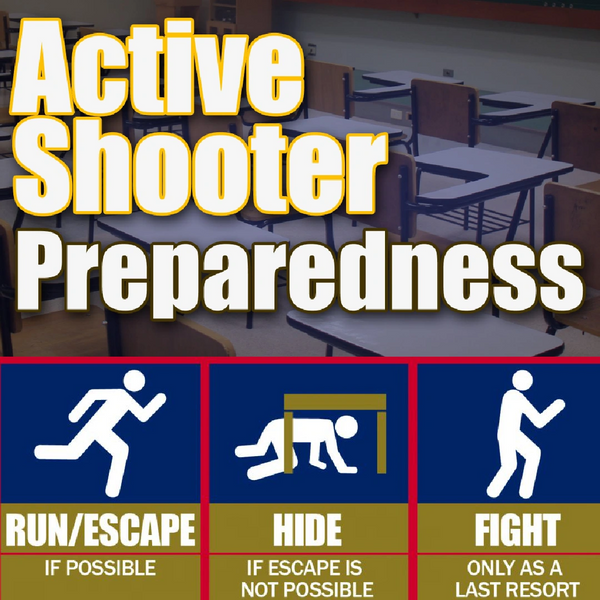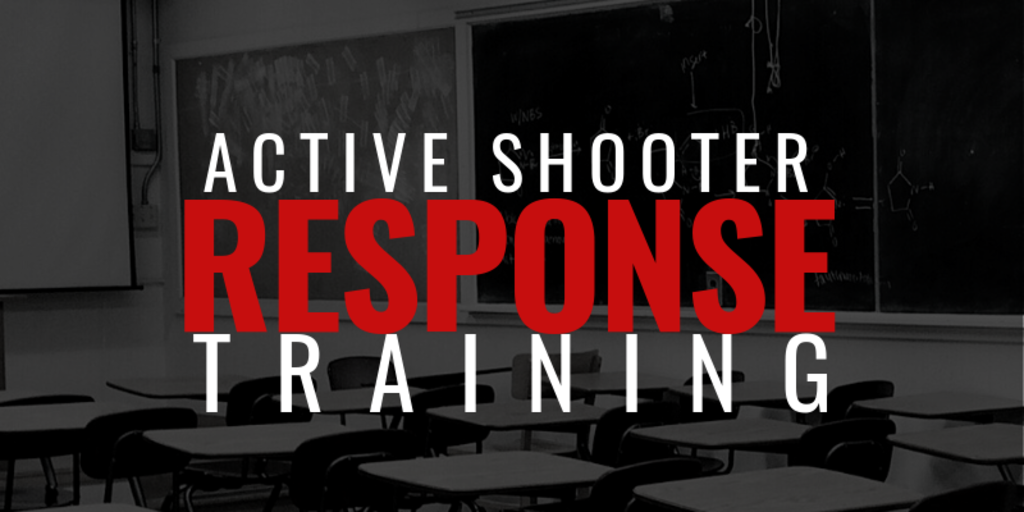Ensuring Public Safety And Security with Advanced Active Shooter Training Methods
Ensuring Public Safety And Security with Advanced Active Shooter Training Methods
Blog Article
Carrying Out Energetic Shooter Training: Ideal Practices for Creating a Safe and Prepared Area Setting
As areas challenge the disturbing fact of active shooter events, the implementation of thorough training programs comes to be critical. What are the vital elements that can transform a common training program right into a durable design for neighborhood strength?

Comprehending the Requirement for Training
In an era noted by increasing occurrences of violence in public spaces, comprehending the demand for energetic shooter training has never ever been much more critical. The frequency of mass capturings across various environmentsâEUR" such as institutions, workplaces, and purchasing centersâEUR" emphasizes the necessity for people and companies to be planned for such emergency situations. Active shooter scenarios can unfold quickly, leaving little time for people to respond effectively. Detailed training initiatives can equip individuals with the expertise and skills to respond decisively.
Training cultivates a sense of empowerment and preparedness, allowing people to feel even more secure in their surroundings. The benefits of active shooter training expand beyond immediate action; they include boosting interaction methods and enhancing total safety and security steps within organizations.
Key Parts of Effective Programs
Reliable active shooter training programs integrate numerous key parts that improve preparedness and feedback capabilities. First, comprehensive curriculum advancement is essential, ensuring that training material is relevant, evidence-based, and tailored to the certain requirements of the organization or community. This consists of comprehending the characteristics of energetic shooter events and the emotional influence on individuals entailed.
Second, sensible training scenarios should be utilized to simulate prospective circumstances, permitting individuals to exercise decision-making and response methods in a regulated setting. These drills help with muscle mass memory and develop confidence among individuals.
Third, a concentrate on interaction procedures is critical. Developing clear lines of interaction among police, emergency responders, and individuals makes sure coordinated responses throughout an event. Normal updates and refresher courses assist keep communication pathways clear and efficient.
4th, continuous evaluation and responses systems ought to be integrated into the training program - active shooter training. Examining the effectiveness of training with individual responses and efficiency metrics enables continuous renovation
Lastly, fostering a culture of security and readiness within the area urges vigilance and proactive steps, making sure that individuals are not only trained however additionally taken part in maintaining a safe and secure environment.
Engaging Community Stakeholders

To efficiently engage these stakeholders, it is essential to connect the goals and benefits of the training. Holding informational sessions can assist clear up the training's function, address concerns, and detail the functions each stakeholder might play. Developing a stakeholder advisory committee can help with ongoing discussion, enabling for you could try these out varied point of views and understandings to be integrated into the training program.
Structure relationships with neighborhood leaders and organizations is additionally essential. Their support can enhance outreach initiatives, rise involvement, and make certain that training is tailored to the special requirements of the area. Additionally, stakeholders can help in sharing info and resources, strengthening the message of security and preparedness.
Inevitably, involving neighborhood stakeholders not only reinforces the training campaign yet additionally grows a feeling of possession amongst homeowners, leading to a much more resilient and educated neighborhood with the ability of responding efficiently to possible threats.
Training Shipment Methods
Utilizing a selection of training shipment approaches is important to suit the varied knowing styles and requirements of individuals in active shooter training programs (active shooter training). Effective training can take a number of types, including lectures, hands-on simulations, online modules, and interactive workshops. Each approach offers an unique function and can boost the overall discovering experience

Online modules offer flexibility and ease of access, allowing individuals to find out at their own rate. These can include video clips, quizzes, and discussions to determine understanding. Interactive workshops motivate seminar and problem-solving, advertising teamwork and communication skills.
Incorporating a mixed approach that combines these approaches not only enhances the training experience but likewise ensures that participants are better prepared to react efficiently in case of an active shooter situation (active shooter training). By attending to different learning choices, companies can develop a more educated and receptive community
Continual Assessment and Renovation
Normal analysis and enhancement of active shooter training programs are crucial to preserving their importance and efficiency. As dangers progress, so must the techniques and methods used in training. Constant analysis makes certain that training material mirrors the most recent intelligence on active shooter events, integrating lessons gained from recent events and adjusting for arising trends.
To facilitate this procedure, organizations need to establish responses devices that consist of participant evaluations, specialist evaluations, and case debriefs. Accumulating information on individual performance during drills and exercises is necessary, as it highlights locations requiring renovation and educates future training sessions. Additionally, engaging with legislation enforcement and emergency situation responders can provide important insights into the practicality and applicability of training procedures.
On a regular basis set up reviews of training materials and techniques need to see be mandated, fostering an atmosphere of advancement and flexibility. Organizations has to likewise urge a society of continuous discovering, where personnel members feel empowered to recommend adjustments based on their experiences. By devoting to constant evaluation and improvement, organizations not just boost the performance of their energetic shooter training programs but also strengthen their total dedication to safety and preparedness within the neighborhood.
Conclusion
To conclude, effective implementation of energetic shooter training necessitates a thorough method that focuses on community interaction and practical simulations. By creating customized curricula, integrating diverse training methods, and fostering partnership amongst stakeholders, areas can boost readiness. Continual evaluation and responses systems are important for adjusting programs to emerging dangers, therefore reinforcing total security. Eventually, a commitment to ongoing training and improvement grows a society of caution and readiness, guaranteeing a safer setting for all neighborhood participants.
Report this page